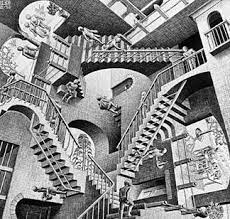The parliamentary budget officer says Canada would need to build 1.3 million additional homes by 2030 to eliminate the country’s housing gap.
The newly released report looks at how many more homes would need to be built restore Canada’s vacancy rate to the historical average.
…
The Canadian Mortgage and Housing Corp. says Canada needs to build 3.5 million more homes by 2030 to restore affordability to 2003-04 levels.
That’s an interesting difference. The PBO report just looks at improving the vacancy rate, while CMHC’s is about affordability.
I know folks who bought around 2003 for $350k. Comparable houses in their neighborhood are around $1.2m. I have a really hard time seeing a drop of that magnitude.
That’s how many need to be built, there is no reality in which we could build that many. There simply aren’t enough construction workers, materials, land, or political will.
There’s plenty of land; it’s just zoned wrong.
Yes and no. There isn’t plenty of available land where people want to live. You’d have to buy up existing properties to build up. Even if it got rezoned, it would take decades to get enough people to sell and move out to build 3.5 million more units and that’s the build target for 2030 (which is only 6 years from now if we’re being generous)
There’s not plenty of land with infrastructure to support people. That many houses also needs more schools, hospitals, roads, gas stations, grocery stores, etc
It’s not just houses we need to build.
There’s not plenty of land with infrastructure to support people.
You may not have understood my point. The land I’m talking about already has infrastructure; you just have to bulldoze the houses that are already there and replace them with multifamily.
Schools only have a set amount of space and hospitals a set amount of beds.
Bulldoze a neighbourhood of 500 detached units housing 1500 people, 500 of which are children, to build towers which can house 6000, 2000 of which are children, you will then need to bulldoze the school which was there to be able to build another school 4x as large or find vacant land to build extra schools.
More people = more infrastructure not just houses.
IDGAF; it’s still infinitely better than sprawl.
Political will is the bottleneck. We’d be able to figure something out if the political class gave a shit.
If nothing else, they could start changing the tax laws so real estate became less of an investment vehicle.
Not really, the political class would cause a revolt from the voters (remember, home ownership is still around 65% in Canada) if they passed policies that dropped the price of housing by 80-90% that quickly.
I always hear that 65% homeowner number floating around but I still haven’t seen a source that differentiates between home owners, and people who live in a household with home owners. Do adult children who can’t afford to move out count as part of the 65% or the other 35%? Also, I don’t know if any of the basement suites I’ve lived in have legally counted as a separate household as they don’t have their own address or unit number. Do the stats take families like mine into account? I’m not trying to disagree with your point here, I’m just very curious if that statistic is actually as accurate or relevant as it seems.
The way it’s calculated by Stats Canada is that of 100% of the residential properties that exist, 65% of them are occupied by the family that owns the property. This can include adult children.
Basement suites are counted as a separate household, even less-than-legal ones.
That does mean that there are less than 65% of people that own a home, but you also have to account for the fact that Homeowners are FAR more likely to vote than non-home owners from a demographic perspective. The voting block is absolutely massive AND is the group that has money to fund political campaigns.
Apparently it’s 63% of Canadian families:
- In 2016, 63% of Canadian families owned their homes, up from 60% in 1999. Almost all of this increase was because of population aging, given that families in older age groups are more likely to own their homes.
other fun facts:
-
From 1999 to 2016, mortgage debt represented two-thirds of the overall increase in debt for Canadian families, while consumer debt made up the remainder. In recent years (2012 to 2016), mortgage debt was responsible for 100% of the increase in total debt.
-
From 1999 to 2016, the median amount of mortgage debt among Canadian families with a mortgage almost doubled, from $91,900 to $180,000 in 2016 constant dollars. The amount of mortgage debt increased in nearly all demographic groups and in almost all regions of Canada.
I think the stat remains sort of relevant.
65% of Canadians agree with reducing the home ownership tax shelter.
Any change to tax laws would need to preserve the position of folks who have already made choices based on the current tax structure.
Adding a lifetime maximum on the capital gains for selling a primary residence would be a step in the right direction. Many US states apparently have that.
Similarly, removing/reducing the mortgage interest deductions for improvements to primary residences would clearly signal that homes are not investment vehicles.
As Gen Squeeze suggests, we can also increase taxes on residences that spike up over a certain value. They suggest one million dollars, but that could vary by region.
Other reply is correct. At best we can build 200-300k homes annually.
There’s no possible way we can reach the 3.5m target
But why are we building only single family homes?
We need fourplexes, we need multi-generational homes, and low rise residential 4-5 floors in height. We need self sufficient communities with transit and less car centric developments.
Our suburban developments as they are currently being constructed are so inefficient in usage of space. Especially since 50% of the land is paved, and subsidized.
“We” aren’t only building single family homes.
In Greater Victoria for example, more than 75% of all new units in the last 5 years have been multi-family dwellings.
It’s likely very similar in other cities.
Results will vary based on the city. My home town seems to finally be infilling some density near major roadways and shopping centers. Othe cities just keep expanding outwards (my hometown included, for every new multi unit there seems to be a whole block of new SFH).
Look at Onterrible under the Ford Dictatorship. We’re fucked over here.
Ford tried to destroy the Green Belt so his rich developer friends could profit by building exclusively single family dwellings.
And when he got caught doing shady shit all the developers got their money back from all the crown land they bought under the pretense of them being able to build on em
Is there a way that I can place a bet and win money if that doesn’t happen?
Buying real estate.
F
And, you know, while at it, why not built as green as possible? That def means no suburbs, that much land & roads, and building techniques that aren’t meant to last just some decades?
We aren’t living in the sci-fi society of tomorrow because we keep building stuff from a century ago.
They needed them by 2020 actually.
Every year, we are going to see a similar study and, every year, the numbers will get bigger.
For the 500 thousand new Canadians each year, we have been building 200 thousand homes.
3 years from now, we will be another million homes behind.
Try 1.3M a year. That’s been the pace.
Should you guys clamp down on your immigration policy until you get the housing situation under control?
That is certainly what the housing math suggests.
However, there is another formula as well. There are more Canadians retiring than there are being added to the workforce and Canada has free healthcare and a fairly generous government pension. Every year, the ratio of employed taxpayers to retirees gets worse.
So what is Canada doing about the demographic problem? Ramping up immigration.
So what happens if Canada cuts the rate of immigration? Higher taxes and / or more government debt.
What problem does increased immigration cause? Unaffordable housing.
In terms of politics, old people are not going to vote for fewer government services and home owners are not going to vote to lower property values. Each group is more than 50% of the population. Canada is a democracy.
No easy answers.
“Sorry, best we can do bribing developers and some boutique tax- and banking-code changes that favour people who already have money!”
I know it’s a real issue, I just find this statement funny:
“The newly released report looks at how many more homes would need to be built restore Canada’s vacancy rate to the historical average.”
We need more homes to be empty!
Makes sense, you want homes empty and prepared for people to move into rather than full and waiting for the house to be built before you can sell it to someone needing one.
We need a national program to build walkable, dense and transit oriented New Towns: https://en.wikipedia.org/wiki/New_towns_in_the_United_Kingdom
is that realistic? seems unrealistic for 6 years
Sounds like a great time to be a carpenter!








